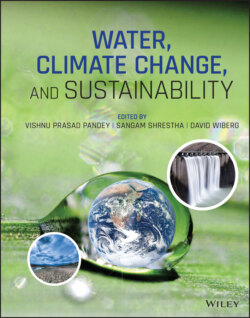Читать книгу Water, Climate Change, and Sustainability - Группа авторов - Страница 54
3.6. CHALLENGES AND OPPORTUNITIES
ОглавлениеThis chapter has outlined some of the indicators that are currently available in sustainability assessment of water and energy in bio‐based systems. However, there are different types of challenges in this context. Firstly, lack of data availability and a well‐defined system boundary make the quantification of the indicators difficult. Secondly, the sustainability indicators are usually new and the establishment of the maximum and minimum values for these indicators is difficult. To overcome this challenge, one solution is to define a specific project as the standard, and use it as a benchmark. In addition, it is important to continuously monitor the system through the sustainability indicators, and use a feedback system after each indicator’s assessment. This will help validate the established ranges for each of the sustainability indicators. Thirdly, quantification of energy use in bio‐based systems requires the use of appropriate energy equivalents to show indirect energy use in the background processes. In addition, indirect energy use during the manufacture of inputs is affected by the type of technology applied and the geographical location. Development and expansion of databases could help quantification of indirect energy use in the production of agricultural inputs. In addition, energy use in agricultural crop production varies significantly. For example, energy use during the cultivation changes from field to field, and it is affected by soil type and quality, climatic conditions, crop rotation, and management of resources use. Thus, site‐specific energy estimation in bio‐based systems should be considered. Fourthly, the water‐energy nexus in bio‐based systems has dynamic characteristics. Hence, development of dynamic system models is necessary to precisely evaluate the nexus impacts on the SDGs. In addition, assessments and metrics need to be based on long‐term and life cycle‐based solutions that reflect their broader impacts.
